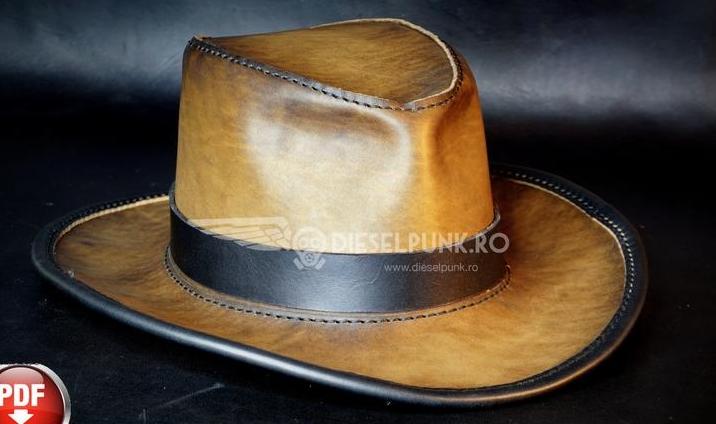-
Posts
5,932 -
Joined
Content Type
Profiles
Forums
Events
Blogs
Gallery
Everything posted by fredk
-
Stack with either clean white paper or quality brown wrapping paper in between each piece. Place stack in a flat plastic box which has a snap on lid
-
Would you trim the belt a wee bit or put a keeper on for that end thats sticking out? The belt looks balanced but I can't help but think that bit sticking out might catch on things on the worktop
-

How to keep a swivel knife sharp?
fredk replied to RedCliffsLeatherwork's topic in How Do I Do That?
Tandy sells, or sold, a wee handy device to help hold the blade whilst sharpening https://tandyleather.com/products/craftool-keen-edge-sharpener -
very clever. Now Henry needs a holster for his measuring spoon
-
I used to have a 1980 Oldsmobile Cutlass built for Canada. It had a 5L diesel engine, but the fuel instructions on it said not to use diesel fuel but, afair, to use Number 2 home heating oil. And the engine and auto gear box had built in heaters. Plug a cable into the mains supply and the heaters kept the oils and water at working temperature. I used the system a few times. Just had to remember to unplug and coil up the short engine bay cable before driving off
-
@SUP another idea, cos I spotted it in the shops yesterday; at this time of year, ie pre-Halloween, the shops, especially the discount shops are selling cheap sets of face/body paints. I saw sets that looked like dried water-soluble cubes of colour, like wot we used at school, but I also saw sets of tube paints. All sets had various 'flesh' and 'blood' colours. The tube set I looked at had a good selection of paints, a mixing palette and brushes for £6
-
I'm not very good at keeping or even getting my edgers sharp. So I use these and dispose of them when they get too blunt. I buy them in the 10s for about under £3. I found you/me will have to pay more for 'leather edgers' than for the same tool as cuticle trimmers in the nail art / beauty section of ebay. I use them on thicknesses from about 3oz (1.2mm) and upwards. They take off from the corner edge a very nicely cut thin strip. On thick leather a second run around the corner rounds the edge a bit more
-
My actual supplier info would be of no use to you except to say; look to suppliers of sail boats and equipment. I got my l-a-d from a sail boat equipment supplier. Another type of business to ask is a supplier of parts to antique / vintage / classic cars
-
Weather here right now is crazy; spring / summer daytime temperatures. Very little wind, clear skies. But at night its getting chilly. I still have my main window wide open, day & night, to keep the temp in my apartment down to a livable 19* or 20* I only have a very large planter outside my apartment. All the flowers should have shut down for winter coming but over the last 7 -10 days they've all grown and are flowering like its summer If we ever get snow here if we get as much as 1 inch the whole country goes into chaos! main roads get closed, buses stop running, airports gets closed down. You'd think they'd know by now, winter = some snow, maybe, get snow plough road gritters out before it comes not 3 or 4 days after
-
When I get a round tuit and finish making a certain leather hat, the pattern bought from dieselpunk, I think spraying some dye on it might help with this look
-
Two hands up and waving ~~ Me! But it can be worser cos I deliberately buy seconds of tools and stuff, for me its #3 and #4 of it. I have a medium sized tool box half-filled with those 'spares' Here we call it TMB, Too Many Birthdays Not leatherwork; I build plastic models. A couple of months ago I put into a box about 8 models to build before November, for a big show in England. That box, about 35cm x 35cm x 45cm, has disappeared. I've had to buy some replacement models
-
mmmm, I think I may have to consider buying this pattern As for paints; any acrylic paints will do. You can get sets of tubes of acrylic paints in discount stores. But you'll need to mix the colours. Alternatively, Warhammer/Citadel does a full range of flesh and blood colours. Any colour of 'flesh' you can imagine, from Goblin Green through Dwarf to Dead and many colours & shades for red. Citadel paints are acrylics meant for painting miniature figures for fantasy war-gaming
-
For this; you could re-purpose a house-hold cleaning product sprayer bottle or get a small water-sprayer bottle for use with house plants. I have both and could re-direct one for dye spraying
-
Some things to take into consideration; 1. the thicker the leather the more likely it will crack, without wetting and forming. Wet forming will help reduce the likelihood of cracking 2. leather from near a bovine back bone is more likely to crack as it tends to be stiffer 3. bovine belly leather is much more flexible and less likely to crack 4. leather from goat, sheep or pig is very flexible and less likely to crack Choose your leather for its intended use. I still have a wallet I started to make years ago. My first attempt. I used the wrong leather and when I folded it it cracked along the fold
-
Did you wet that section of leather before bending it to shape and letting it dry that way? then a feed with some NFO?
-

Are Basket-Weave Stampers Negligent!?!
fredk replied to RVM45's topic in Gun Holsters, Rifle Slings and Knife Sheathes
When I was a cadet stating out in the RAF a very famous WW2 RAF pilot told me; 'Rules are for the obedience of fools and the guidance of wise men. Don't listen to anyone who tells you that you can't do this or that. That's nonsense. Boy, learn the rules and obey them, then later you will know which rules you can ignore' -
Yeah! That tall one looks real classy
-
I've found that not only on Tandy but also on other makes the thread in conchos and similar fittings are badly cut or blocked. Now I run a thread tap into the hole. I recut the thread to either M3 or M4. I keep a supply of small flanged head bolts in these sizes. I think the thread in Tandy conchos might be a UNF. You might be able to get a UNF thread tap to run down into the hole to clean it as I think, when the concho was plated the inside of the hole got plated as well, reducing its size a wee bit Not the post; As then you'll have to hit the post to peen it and that could damage the front of the concho. Happened to me, sort of. I had some fittings that were to be riveted on. The fitting had the rivet post. When I tried to fix the rivet cap, even at the lightest tap the fitting broke. Best was just one got riveted on but the front was deformed. Two-pack resin glue will hold the female part of a snap to the back of a concho. But there is a risk, if the snap is a tight one, the female part will pull away
-
Of course you could just punch out a leather washer and buy small flanged headed bolts. Probably much cheaper that way. I bought a couple of packs of the conversion sets, just cos they was on sale For more as I'm in Europe I couldn't get US threaded bolts so I got a thread tap, recut the thread in the concho for M4 and bought M4 bolts
-
Back on topic chaps; I reckon a few of these, in different heights, dyed in red and green with Christmasy type decoration might be a good seller at Christmas markets
-
10/8 18.30. Almost 1 week on None of my pieces have any smell nor any growth of anything on them, which I will loosely call 'fungus' Piece #3, Lard, is slightly stiffer than Control Piece #4, NFO Compound is slightly stiffer than Control and is very slightly stiffer than #3 Piece # 6, 3-in-1 oil, is noticeably stiffer than Control and #3 & #4 All other pieces seem to be equally flexible as Control. But these, including Control are slightly stiffer than the leather they were cut from so I'll have to have a #2 'Control' in my leather-working room I've not yet sorted the #2 set for hanging up outside
-
Buy it, then; forego coffees from Starbucks and choccy bikkies for a couple of weeks Ya never know when ya might want or need one
-
Here a 'pig in a blanket; is a sausage roll. Sausage meat cooked in a pastry type roll I reckon it might be cos a lot of Oirish were transported to the penal colony now called Oistraylia No chicken is involved in the making of My main recipe is. Mix and grind down, not too smoothly, some (no exact measurements, just as much as you like or want) regular salt, coarse sea salt, ground black pepper, some black pepper corns (crushed down in a mortar), a bit of ground ginger, a wee bit of cinnamon, a wee bit of cardamon,(optional) a wee bit of ground garlic (NOT garlic salt!) and some ground dried onion granules, (NOT onion salt!) and sometimes some other 'erbs I may spot in my cupboard. All, mixed together and slightly ground together in my mortar & pestle (not the vessel which has the poison. . . . ).Keep it slightly rough so you can taste the large pieces of pepper et cetera I usually make a very large bowl of it and dispense into salt shakers. It lasts a very long time as you don't use much. I've given some away to some friends from South Africa and OZ and they like it and they gave it the thumbs up. The main differences between this and medieval 'poudre deuce' is that contains saffron (lots) and finely ground sugar (lots) and was used on top of puddings. not chips/fries, cooked chicken. I like it on cooked ham slices in a sandwich
-
Good job Tandy sells, or did sell a 10 pack conversion set https://tandyleather.com/products/concho-snap-adapter-10-pack



